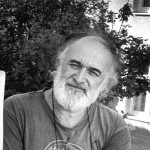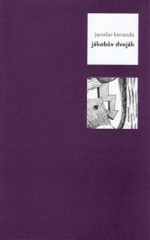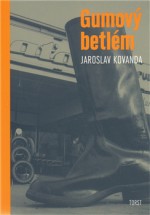Poet, novelist, journalist, painter, sculptor and editor, long-standing editor-in-chief of the poetry magazine Psí víno (Dog Wine). He was nominated for the Josef Škvorecký Award (2011). He was born in Zlín on 26 February 1941.
Jaroslav Kovanda
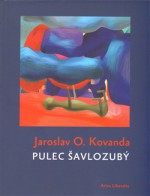
The Sabre - Toothed Tadpole. Reportage Written in a Garden.
Pulec šavlozubý. Reportáž psaná na zahrádce
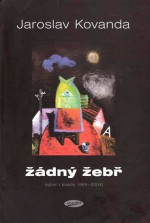
No Ladder
Žádný žebř
| Title | Publisher | Year | Selected published translations | Awards |
|---|---|---|---|---|
| Jacob´s Stepladder (Jákobův dvoják) | Pulchra | 2013 | ||
| Rubber Nativity (Gumový betlém) | Torst | 2010 | ||
| The Sabre - Toothed Tadpole. Reportage Written in a Garden. (Pulec šavlozubý. Reportáž psaná na zahrádce) | Artes Liberales | 2009 | ||
| One Jura Vičík (Nejaký Jura Vičík) | Muzejní společnost ve Valašských Kloboukách | 2008 | ||
| A Trip to Kost (Výlet na Kost) | Protis | 2007 | ||
| No Ladder (Žádný žebř) | Votobia | 2005 | ||
| A Boy Playing with a Crab (Chlapec hrající si s krabem) | MaPa | 2004 | ||
| The Skies Over the Canteen (Nebe nad kantýnou) | Ottobre 12 | 2002 | ||
| Afternoon Break (Odpolední klid) | Host | 2001 | ||
| The Legend of Svedrup (Legenda o Svedrupovi) | Votobia | 2000 | ||
| Erben Outside the Window (Za oknem Erben) | Host | 1999 | ||
| Awns (Osiny) | vlastní náklad | 1996 | ||
| The Zlín Eight (Zlínská osma) | ZUŠ | 1995 | ||
| Dear Cousin (Milý bratranče) | OKS | 1990 |

The Sabre - Toothed Tadpole. Reportage Written in a Garden.
Pulec šavlozubý. Reportáž psaná na zahrádce
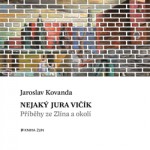
One Jura Vičík
Nejaký Jura Vičík
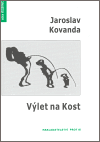
A Trip to Kost
Výlet na Kost

No Ladder
Žádný žebř
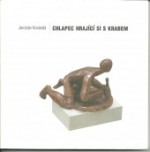
A Boy Playing with a Crab
Chlapec hrající si s krabem

The Skies Over the Canteen
Nebe nad kantýnou

Afternoon Break
Odpolední klid
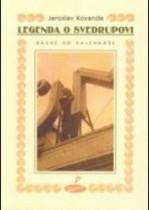
The Legend of Svedrup
Legenda o Svedrupovi
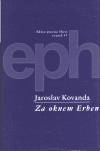
Erben Outside the Window
Za oknem Erben
Osiny
Jaroslav Kovanda
Awns
Osiny
Zlínská osma
Jaroslav Kovanda
The Zlín Eight
Zlínská osma
Milý bratranče
Jaroslav Kovanda
Dear Cousin
Milý bratranče
Praise
Rubber Nativity demands of the reader more careful and attentive reading than the usual “story-driven” prose. However, it is definitely worth devoting the necessary time and effort to the book. Whoever gets into the text will not regret it.
—Iva Frühaufová
iLiteratura
He has worked as a teacher, a tutor, proofreader and even as a heating operator. He has been in charge of the magazine Psí víno since 1997. He has been writing poetry since the 1960s, though his first book, the collection Osiny (Awns, privately published), wasn’t published until 1996. This was followed by the collection Za oknem Erben (Erben Outside the Window, Host, 1999) and academic Petr A. Bílek wrote that it was: “As though the author had only tentatively shown slides from years gone by, and then disparaged them with his accompanying commentary. Wise in the overall message of balanced talk and pleasant in the uncouthness in the reading.” Legenda o Svedrupovi (The Legend of Svedrup, Votobia, 2000) and Odpolední klid (Afternoon Break, Host, 2001) served to confirm the author’s maturity. They do not only describe the present; they are epic returns to a past that Kovanda heard about through his relatives or discovered in the archives. Nebe nad kantýnou (The Skies Above the Canteen, Ottobre 12, 2002) was constructed in a similar style – stories from 1901-2001 were incorporated into sonnets.
2004 saw the publication of a conversation between Radim Kopáč and Jaroslav Kovanda about his work (Jako kojený anděl [Like a Breast-Fed Angel], Ottobre 12, 2004), and his collection Chlapec hrající si s krabem (A Boy Playing with a Crab, Martin Stöhr, 2004) also came out in the same year. Several anthologies were to follow: Žádný žebř (No Ladder, Votobia, 2005), containing poems from 1969–2004, and Výlet na Kost (A Trip to Kost, Protis, 2007), covering the years 1968–2005. The critic Radim Kopáč wrote of the author that, “Although Kovanda’s expression is a definitive kind of permanent eye-witness in the style of Kolář, on the other hand, in each of his opuses the poet is an unsettled and sensitive seducer of poetic forms and linguistic possibilities.”
At this point Kovanda also focused on prose and his first published collection consisted of fictional myths written in dialect about a Wallachian antihero called Nejaký Jura Vilčík (One Jura Vilčík, Muzeum Valašské Klobúky, 2008, later Kniha Zlín, 2014). This was followed by a collection of feuilletons, Pulec šavlozubý – reportáž psaná na zahrádce (The Sabre-Toothed Tadpole – Reportage Written in the Garden, Artes Liberales, 2009). Kovanda was nominated for the Josef Škvorecký Award for his most important novel Gumový betlém (Rubber Nativity, Torst, 2010). It is a fictional story chronicling the life of the divided Fila family and their complex relationships. Through the narrator, Jaroslav (who was also born in 1941), Kovanda records events between 1901 and 2010. “At first sight Gumový betlém seems like prose, but if we look at its structure more closely, we discover that it has characteristics which are closer to poetry. ..The narrator calls himself a poet and the individual chapters poems, and overall it is rhythmical prose,” wrote Iva Frühaufová for iLiteratura.cz.
Kovanda’s most recent prose work is a collection of feuilletons published between 1997 and 2009, S jazykem od inkoustu (With an Inky Tongue, Kniha Zlín, 2010) and Jákobův dvoják (Jacob’s Stepladder, Pulchra, 2014), where the stepladder really is an invented ladder. “Jaroslav Kovanda neither wants to nor knows how to simplify, harmonize or soothe the world. He is surrounded by the endless complexity of everything, and it is precisely this which he wants to address – the garbled, the harrowing and the ambiguous,” wrote editor Jan Šulc.
